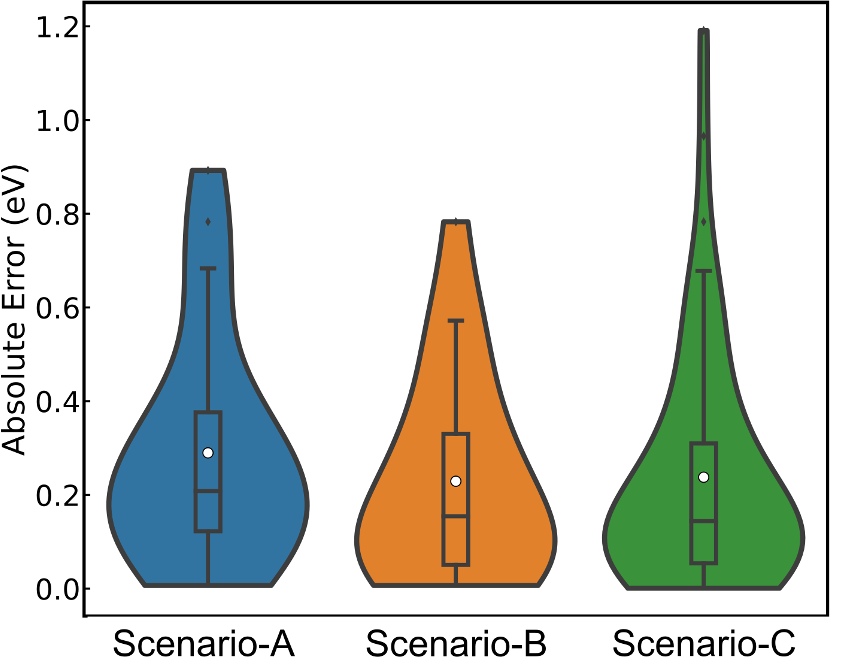Abstract
Ionic mobility determines the rate performance of several applications, such as batteries, fuel cells, and electrochemical sensors and is exponentially dependent on the migration barrier (Em), a difficult to measure/calculate quantity. Previous approaches to identify materials with high ionic mobility have relied on imprecise descriptors given the lack of generalizable models to predict Em. Here, we present a graph neural network based architecture that leverages principles of transfer learning to efficiently and accurately predict Em across a diverse set of materials. We use a model pre-trained simultaneously on seven distinct bulk properties (labeled MPT), modify the MPT model to classify different migration pathways in a structure, and fine-tune (FT) on a manually-curated literature-derived dataset of 619 Em data points calculated with density functional theory. Importantly, our best-performing FT model (labeled MODEL-3) demonstrates substantial improvements in prediction accuracy compared to classical machine learning methods, graph models trained from scratch, and a universal machine learned interatomic potential, with a R2 score of 0.703 and a mean absolute error of 0.261 eV on the test set. Notably, MODEL-3 is able to distinguish different migration pathways within a structure and also demonstrates excellent ability to generalize across intercalant compositions and chemistries. As a classifier, MODEL-3 exhibits 80% accuracy and 82.8% precision in identifying materials that are `good’ ionic conductors (i.e., structures with Em<0.65 eV). Thus, our work demonstrates the effective use of FT strategies and architectural modifications necessary for making swift and accurate Em predictions, which will be useful for materials discovery in batteries and for predicting other data-scarce material properties.
